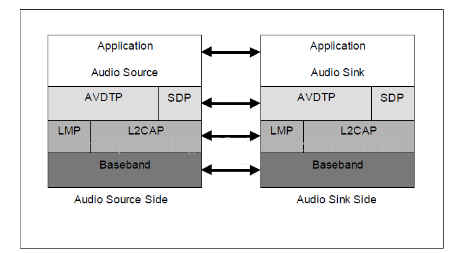The Diffence Between Bluetooth A2DP and AVRCP
A2DP and AVRCP are two high-level application protocols of traditional Bluetooth. Generally speaking, in the application products on the market, all the Bluetooth products that support A2DP support AVRCP. So how do the two work together? And what role do they play? what's the difference.
1. A2DP, Advanced Audio Distribution Profile. The protocol stack software and usage method for transmitting high-quality audio protective gear by using the Bluetooth asynchronous transmission channel mode are specified. For example, a stereo Bluetooth headset can be used to listen to music from a music player;
2. AVRCP, Audio Video Remote Control Profile. As the name implies, it refers to the remote-control function, which defines the characteristics and protocols for controlling audio and video streams. It generally includes remote control operations such as pause, stop, replay, and volume control. For example, using a Bluetooth headset can pause, switch to the next song, etc. to control the music player.
Bluetooth A2DP Profile:
1) A2DP Profile defines the protocol and process of high-quality audio data transmission, including the transmission of stereo and mono data. The high-quality audio here refers to mono (Mono) and stereo (Stereo) audio, which is mainly different from the ordinary voice transmitted on the Bluetooth SCO link, and of course does not include surround sound.
That is to say: the sound quality of A2DP is different from that of Bluetooth audio. Bluetooth audio can only provide voice quality, while A2DP can provide mono or stereo quality. The former is transmitted on the SCO Channel, while the latter is transmitted on the ACL Channel.
2) A typical application of A2DP is to send audio data from a music player to headphones or speakers. Due to the narrow bandwidth provided by Bluetooth, audio data may need to be effectively compressed to ensure real-time playback at the receiving end.
3) The realization of A2DP depends on GAVDP and GAP. The establishment process of stream connection is defined in GAVDP, and the stream parameters and encoding and decoding processes are defined in A2DP.
A2DP defines two roles: SRC: source of audio data stream; SNK: receiver of audio data stream
A2DP requires SRC and SNK to support at least the Low Complexity Subband Codec (SBC) standard.
MPEG-1 Audio, Mpeg-2 Audio, MPEG-2, 4 Advanced Audio Coding and Adaptive Transform Acoustic Coding, ATRAC) these audio coding standards are optional.
Other encoding standards besides this are called "Non-A2DP Codec", such as Qualcomm's APTX, Sony's LDAC, Apple's AAC, FastStream, etc. Note:
If the SRC side sends the stream data to the SNK in the non-A2DP Codec format, and the SNK does not support the non-A2DP Codec format, the SRC will re-encode it in the SBC mode and send it again.
Bluetooth AVRCP Profile:
AVRCP: Audio/Video Remote Control Profile, so this protocol can not only control Bluetooth music, but also control the corresponding functions of video streaming. The common scenarios that use the AVRCP control function are as follows:
Bluetooth devices such as headphones or cars control the playback of music sources on other devices (mobile phones)
Remote device controls video playback on other devices
The remote device controls the mobile phone to take pictures (the mobile phone foreground application is the camera)
The AVRCP protocol version changes, and the versions are all backward compatible:
v1.0: Basic remote control commands like play, pause, cut song
v1.3: Added access to the current playback status of the music and the song information of the music played (total duration of the song, current playback position, song name, album name, singer)
v1.4: Added browsing function, support absolute volume adjustment
v1.5: Changes passed to relevant protocols to correct various errors
v1.6: Added two new features:
The number of items, the interface for the controller, the number of items in the request and receive folders without downloading the list
Cover art, which supports the transfer of images to media projects via the BIP (Basic Imaging Profile) protocol based on the OBEX protocol
Therefore, if the AVRCP protocol of both devices supports 1.6 and above, the function of transferring pictures through Bluetooth can be realized. Due to the limitation of the amount of data transmitted by Bluetooth, this function is only suitable for the transmission of small amounts of data such as music album cover photos, and is not suitable for the transmission of large quantities of pictures.
So far, the AVRCP protocol structure and dependencies of the latest v1.6 version are as follows:



